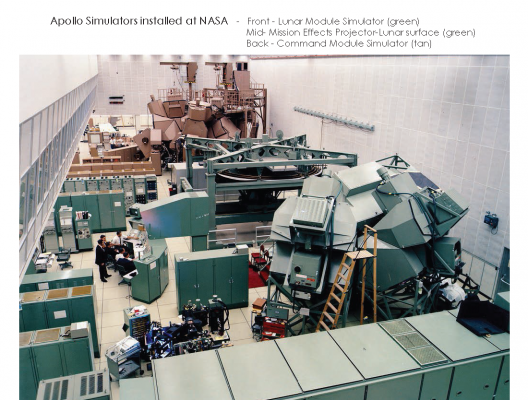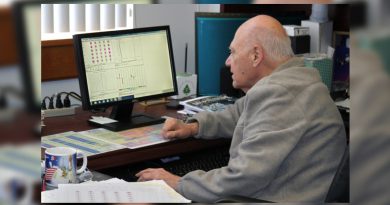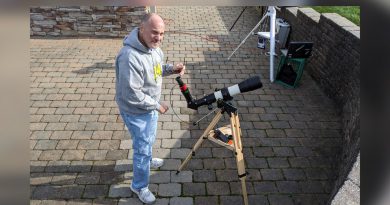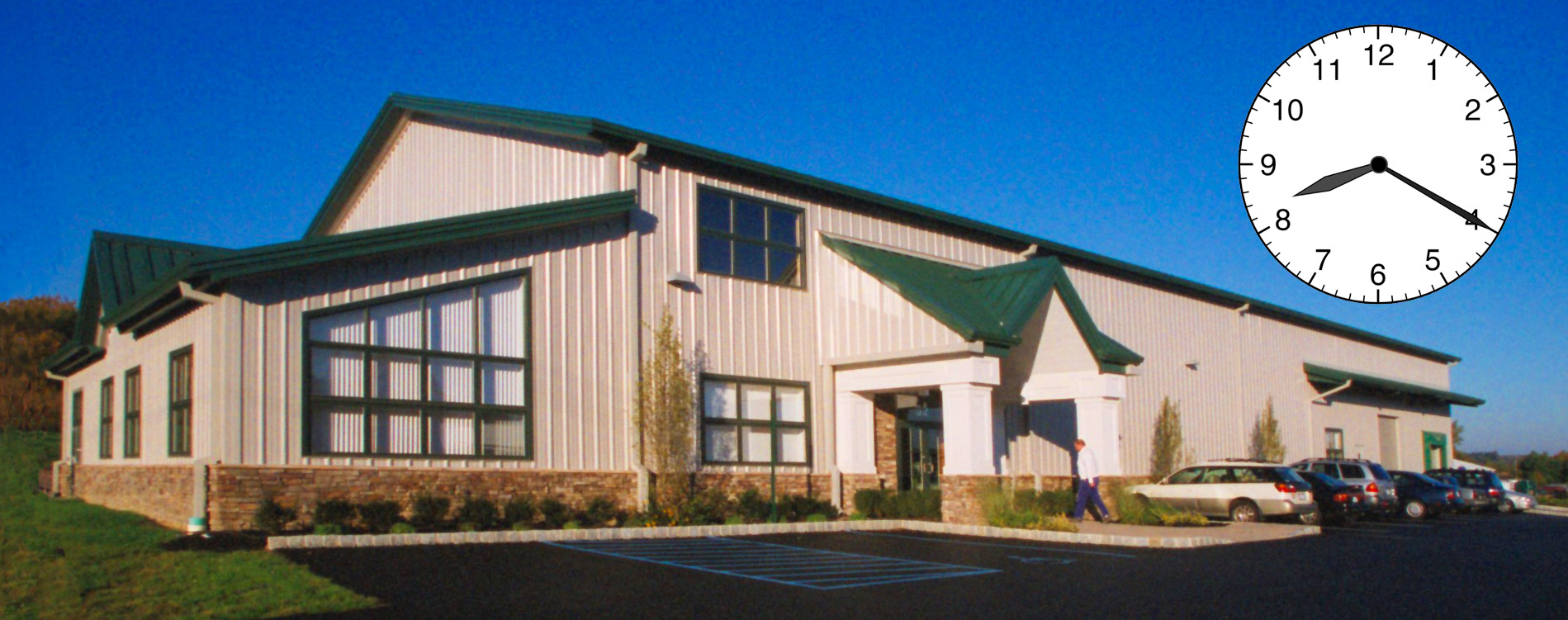50 Years Ago: How Simulators Saved Apollo 13
The greatest untold story of the Apollo 13 mission is that of the spacecraft simulators.
Gerald Griffin, Apollo Mission Control Flight Director
Apollo 13 was the third attempt to land astronauts on the Moon. The landing site chosen was north of Fra Mauro crater, on the opposite shore of Mare Cognitum from where Apollo 12 had landed five months earlier. It may be hard to believe now, but no major television network covered the launch of the 363 ft (110.6 m) tall Saturn V rocket as it slowly lifted off Launch Pad 39A at the Kennedy Space Center on April 11, 1970 at 2:13 p.m. EST. Trips to the Moon had quickly become blasé in the public imagination and only the Center staff, spectators, and people living on the Space Coast turned their heads to follow the crew as they began their journey into space on a tail of flame.
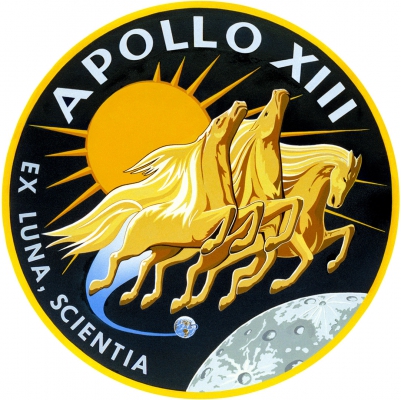
The initial part of the mission was indeed uneventful for Commander Jim Lovell, command module pilot Jack Swigert and lunar module pilot Fred Haise. But at about 55 hours, 55 minutes into the mission, Swigert calmly radioed flight control in Houston, Texas with the famous words: “Okay, Houston, we’ve had a problem here.” The crew had felt a loud bang and were losing electrical power. His understated tone didn’t trigger any urgency until Commander Lovell looked out the window and told Houston the ominous news. “It looks to me, looking out the hatch, that we are venting something.” He repeated this for emphasis, stumbling over his words: “We are venting something out into the — into space.” It was late in the evening of April 13, 1970 when the blasé faded and the news networks began to pay attention to the drama 210,000 miles (330,000 km) from Earth.
At this point in the mission, the spacecraft consisted of the cone shaped Command Module that the astronauts were traveling in; the cylindrical Service Module that contained oxygen, power, and the rocket engine to return them to Earth; and the spider-like Lunar Module that was designed for two astronauts to land, live in, and return from the Moon. Any rescue plan was limited to use of this hardware.
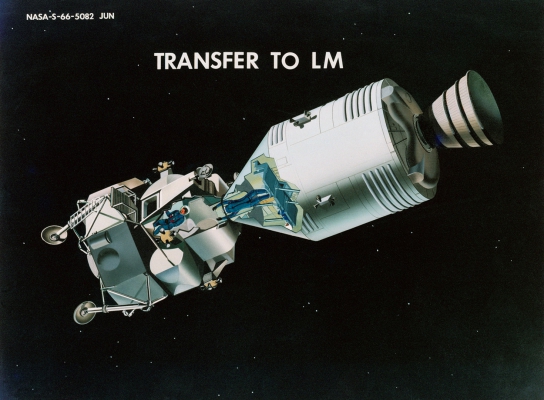
Back at Houston, readings indicated that two of the three fuel cells in the Service Module, were lost and soon all systems in the Command Module would shut down and leave the crew without life support and navigational control of the craft. Flight controllers quickly turned to the Apollo simulators to come up with a plan to bring the crew safely back to Earth. The plan would involve sparing the little power left by using the Lunar Module as a “lifeboat” as they returned to Earth. Near Earth, they would transfer to the Command Module to enter the atmosphere and land.
The best training device in the world at that time and probably still ranks even to this day.Farouk El Baz, Principal Investigator for Apollo Visual Observation & Photography
The simulators were so damned important for trying the things we want them to do.Frank Hughes, NASA Chief of Spaceflight Training (retired)
The story of how the ground simulators saved Apollo 13 is best told from a contemporary article published in The Connecting Link magazine, Summer 1970 issue (Volume VIII, No. 2, copyright Singer-General Precision, Inc.). This was the in-house magazine of the company that developed the simulators for the Apollo missions. The following quotes are from the first paragraphs of the lead story of that issue: “Deliverance from Disaster”.
“Keep ‘em Running,” said Astronaut Eugene A. Cernan as he strode into the simulator room late on that fateful Monday night.
And keep ‘em running they did, for the whole momentous week.
It was the week that saw one of history’s most dramatic rescues as virtually the whole world held its breath.
It was a week of which The Singer Company could be proud because simulators built and maintained by its Link Division for NASA played a major role in bringing the moon-bound Apollo 13 trio safely back to earth.
As The New York Times reported: “The countless improvisations that nursed the crippled spacecraft along were in large measure the product of an extraordinarily elaborate assembly of simulators at the Manned Spacecraft Center in Houston and elsewhere. Every makeshift procedure carried out in space was first tried out on earth, and rejected if the simulators showed it to be dangerous or impractical.”
The article continues with a discussion of what exactly the astronauts on the ground simulated to help their colleagues in space get home.
The first question was whether to jettison the damaged service module and head back immediately. A NASA official concluded, however, that the command module heat shield, without the protection of the service module, might be damaged by heat and ultraviolet rays. Therefore a longer but safer flight plan was devised.
To accomplish this, it had to be determined whether the little lunar module (LM) was powerful enough to drive the command and service modules back toward earth. As one commentator put it “It’s like rowing a large yacht with oars.”
“This was the first problem posed to the simulator after Cernan and fellow astronauts arrived on the double. They “flew” the LM simulator until after dawn, concluding that the procedure not only would work but could be accomplished with surprisingly small amounts of fuel.
The next critical point was the perigee plus two-hour burn to send the crippled craft speeding earthward. This was tried on the simulators several times. Told of the tests, Captain James A. Lovell Jr. said from space: “I’m glad to hear that.”
The article then describes how the simulators were used to tell the crew in space how to align the spacecraft correctly to make a return to Earth and the proper way to rotate their ship (“barbecue mode”) to evenly expose the craft to the heat of the Sun. Finally, the procedure to prepare for landing was worked out.
The final test in the simulators was perhaps the most exacting one of all: how to jettison the lifeboat LM and crippled service module and plummet through the earth’s atmosphere to safety. This is a critical maneuver under the best of circumstances – if the command capsule hits the atmosphere at too steep an angle it will burn up; if at too shallow an angle it will skip out into limbo.
This time the situation was even more demanding because the life-saving LM had to be jettisoned, along with the service module, at the last possible moment. Furthermore, the Apollo crew was determined to take pictures of the latter to learn more about the nature and extend of the damage.
With the knowledge that all procedures had been tested thoroughly on the ground simulators, the astronauts in space felt assured they could accomplish them. In the end they did, and safety landed back on Earth on Friday, April 17, 1970.

Did you observe, sketch, or image with Tele Vue gear? We’ll like your social media post on that if you tag it #televue and the gear used. Example:
#televue #tv85 #ethos #venus
Do you want your Tele Vue images re-posted on Tele Vue Optics’ Social Media accounts? Use this hashtag for consideration:
For a modern recounting of what happened to Apollo 13 and how it was resolved, see this recent article on the EarthSky website.
To learn how the Lunar Module simulator influenced Tele Vue eyepiece designs, read our blog post “Winter Star Party 2017: in the Eye of ‘Kermitis’”.
Binghamton, NY is the “Birthplace of Virtual Reality”. This is where the Link company began to build aircraft simulators in the 1930s and eventually the Apollo simulators in the 1960s. Read about the restoration of the LM simulator on our blog “Al’s First ‘Space Walk Experience’ — in the News”.



